Based on current estimates, more than 25 percent of all dogs will be diagnosed with cancer at some point in their lives, and 50 percent of all dogs over the age of 10 will die of cancer.
Of the many forms of cancer, lymphoma is one of the most common seen in dogs. While there are breeds that appear to be more at risk than others, lymphoma can affect any breed of dog at any age. Lymphoma accounts for 10 to 20 percent of all cancers in dogs.
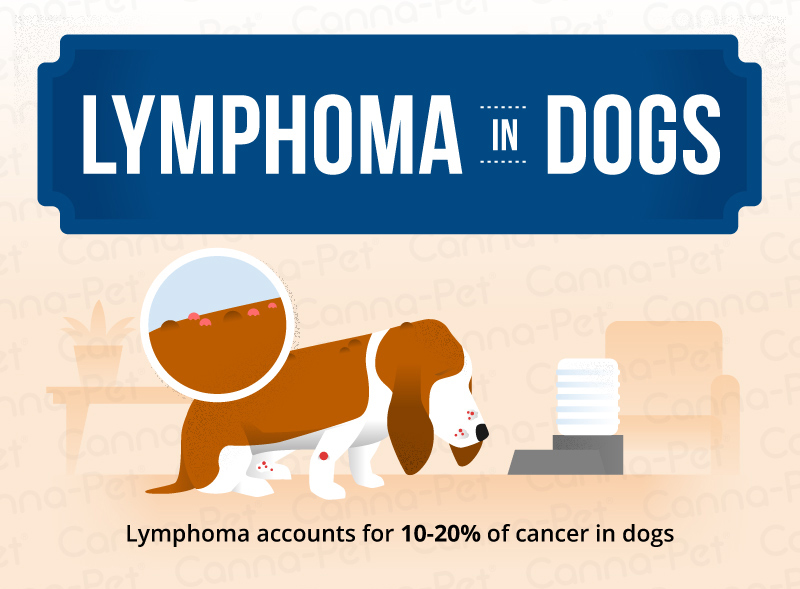
What is Lymphoma?
Lymphoma (lymphosarcoma or non-Hodgkin’s lymphoma) is a malignant cancer affecting the lymphoid system. Lymphoma specifically refers to a diverse group of cancers in dogs that originate in white blood cells called lymphocytes. These lymphocytes exist in the lymphoid system and normally function as part of the immune system to protect the body from infectious viruses and bacteria. There are two forms of lymphocytes known as B cells and T cells. Lymphoma can occur in either type of white blood cell, resulting in b-cell lymphoma or t-cell lymphoma. Between 15 and 20 percent of malignant tumors in dogs are lymphomas.
Lymphoma can affect virtually any organ in the body, but mostly affects organs that function as part of the immune system. Lymphoid tissue is found in many parts of the body, including the lymph nodes, spleen, liver, gastrointestinal tract, skin, and bone marrow. Lymphosarcoma is classified according to the location in the body in which the cancer begins.
There are over 30 types of dog lymphoma, and these cancers vary greatly in their behavior. The five main types of lymphoma are:
-
- multicentric lymphoma (affecting external lymph nodes),
- mediastinal lymphoma (involving organs within the chest, such as lymph nodes or the thymus gland),
- gastrointestinal lymphoma (of the stomach and/or intestines),
- cutaneous lymphoma (of the skin),
- extranodal lymphoma (affecting the chest, skin, liver, eyes, bone or mouth)
and central nervous system. Multicentric lymphoma is by far the most common type of lymphoma in dogs.
Commonly, lymphoma can cause dog lymph nodes to be 3 to 10 times their normal size. While not painful, these can feel firmy, rubbery and move freely under the skin. Multicentric lymphoma in dogs can also cause:
-
- Lethargy
- Fever
- Anorexia
- Weakness
- Dehydration
Some forms progress rapidly and are life-threatening without treatment, while others progress very slowly and are managed as chronic, inactive diseases. But if left untreated, the cancer can be aggressive and lead to a high mortality rate.
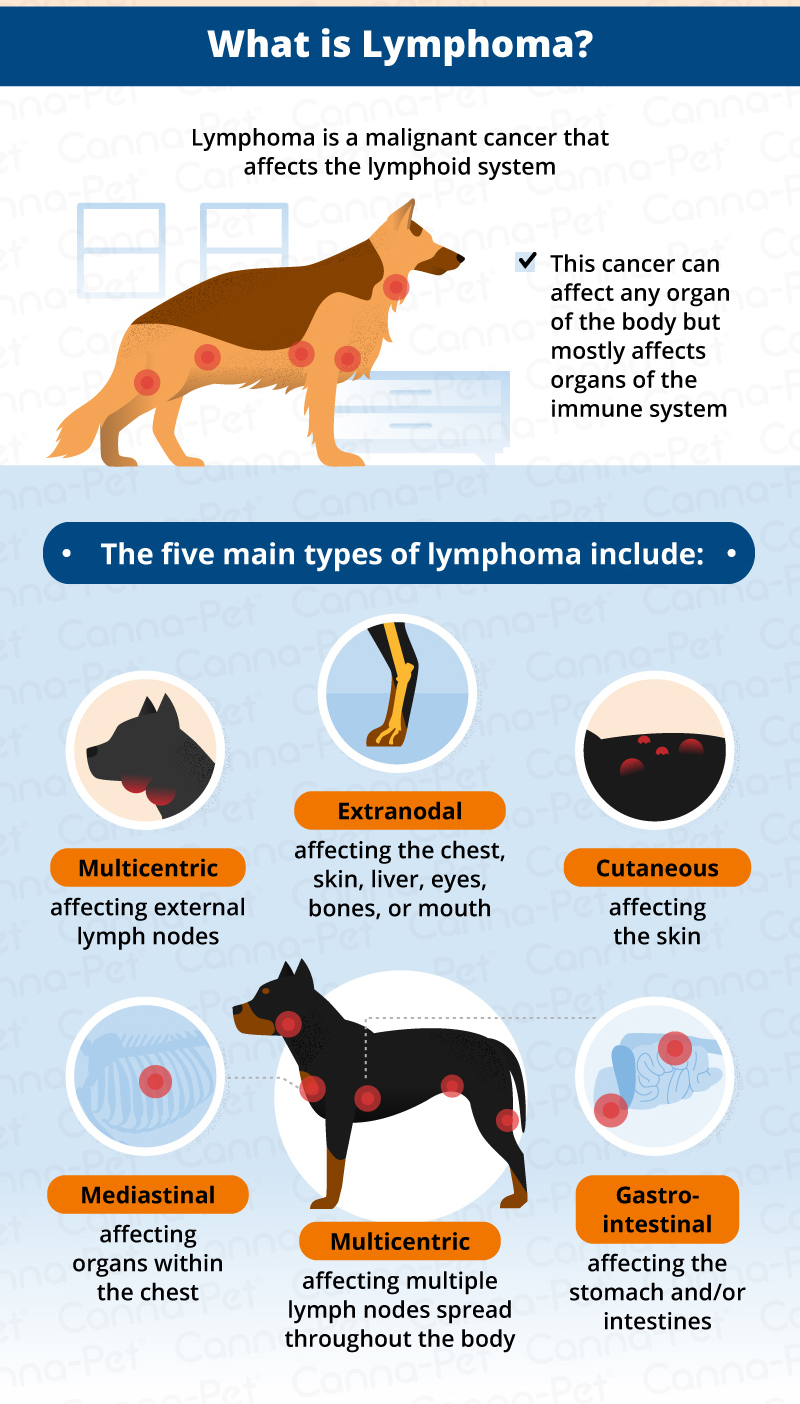
What Causes Lymphoma in Dogs?
While the cause of lymphoma in dogs is not known, several possible causes have been studied. These include viruses, bacteria, chemical exposure, and physical factors like strong magnetic fields. Current investigations are ongoing in these areas to determine more definitive causes.
There are certain environmental factors that are also believed to trigger the disease.
There is growing evidence to suggest that exposure to pesticides can lead to malignancy. A study published in 2012 found that utilizing chemicals, specifically 24-D herbicides, to achieve a more lush lawn, is likely causing lymphoma. When compared to control groups, the study found that dogs with malignant lymphoma were 70 percent more likely to live in a home where professionally applied lawn pesticides had been used.
This goes for homes that have sprayed for pests as well. Dogs with serious malignancy are also 170 percent more likely to come from homes where chemical insecticides have been used to eradicate pests. So if you have a dog, make sure to keep them in mind before treating your lawn or home with chemicals.
Other possible environmental factors include homes that have a high usage of other chemicals like paints and solvents. Dogs that live in industrial areas are believed to be at an increased risk of lymphoma. There is even some speculation that strong magnetic fields may increase the incidence of lymphoma in dogs, but there is currently no absolute proof.
Weak immune systems have also been identified in dogs with lymphoma. While suppression of the immune system is a known risk factor for the development of lymphoma in humans, the link between immune suppression and lymphoma in dogs has not been clearly established.
There have also been reports of changes in the normal structure of chromosomes in canine lymphoma. The involvement of a group of viruses in the development of a lymphoma tumor has not yet been confirmed, but certain viral cells with properties similar to retroviruses have been detected in the short-term cultures of canine lymphoma tissue.
As discussed below, there is evidence to suggest a possible genetic correlation in dogs because of the higher prevalence of lymphoma in certain breeds. While it is known that certain breeds develop the disease more than others, further studies need to be performed to determine the risk factors that will give an answer as to why.
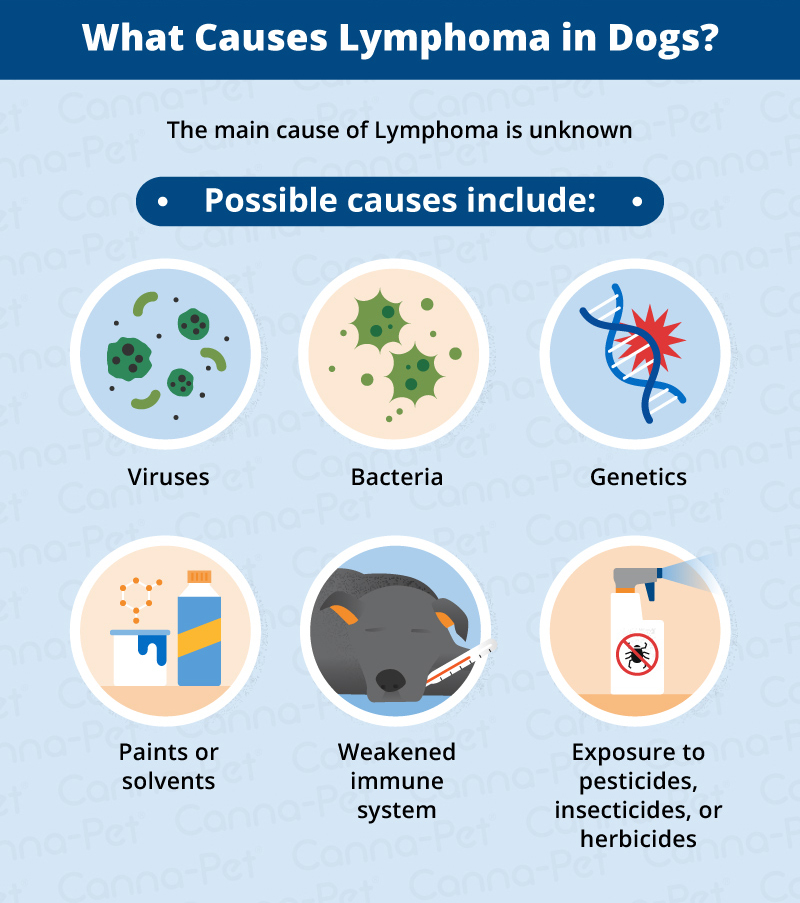
Risk Factors for Lymphoma in Dogs
As mentioned previously, any breed of dog can develop lymphoma, but it is more prevalent in some breeds than others. Breeds that have a higher than average risk of developing this disease and include Rottweilers, Scottish Terriers, Bullmastiffs, Boxers, Basset Hounds, Airedales, Saint Bernards, Bulldogs, and Golden Retrievers. Dogs with a lower risk include Dachshunds and Pomeranians.
Dogs of any age can develop lymphoma as well, but it mainly affects middle aged to older dogs, with a median age of six to nine years. There does not appear to be a correlation to the sex of the dog, but it is generally agreed that neutered females tend to have a better prognosis.

Symptoms of Lymphoma in Dogs
Dog lymphoma is a systemic disease that affects the whole body. Signs of lymphoma in dogs can sometimes be difficult to pick up on, but others will be more obvious, based on the location and type of lymphoma, and the stage of the disease.
Most often, canine lymphoma appears as swollen lymph nodes that can be seen or felt on a dog’s body. The most common and easy-to-locate lymph nodes are under the jaw, in front of the shoulders, or behind the knee. The swelling can sometimes be the only symptom that presents itself. A swollen lymph node will feel like a hard, rubbery lump under a dog’s skin, and is generally not painful to the dog. Lymphoma can also occasionally affect lymph nodes that are not visible from outside the body, like those found inside the chest or in the abdomen.
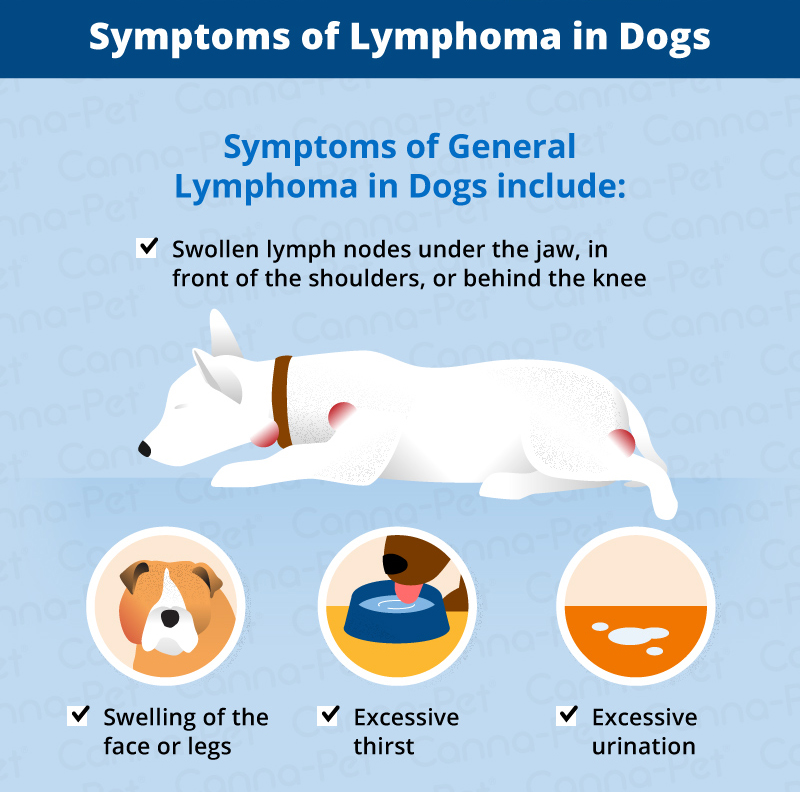
Gastrointestinal lymphoma can be accompanied by vomiting, watery diarrhea, lethargy, malabsorption, weight loss, and lack of appetite are the most common symptoms. The diarrhea is often very dark in color and foul-smelling. Alimentary lymphoma accounts for just five percent of canine lymphoma and is less easily diagnosed than others.

Cutaneous lymphoma (affecting the skin) can present itself in many different ways, including single or multiple lumps in the skin or mouth. It tends to appear first as dry, flaky, red, itchy patches of skin anywhere on the body. The skin can become moist, ulcerated, very red, and thicken as the disease progresses. Large masses (tumors) can also form in the skin. This form of lymphoma may progress slowly, and is often treated for several months as an infection or allergy before a proper diagnosis is made.
When cutaneous lymphoma is found in the mouth, it often affects the gums, lips, and the roof of the mouth. In early stages, cutaneous lymphoma in the mouth is often mistaken for periodontal disease or gingivitis.
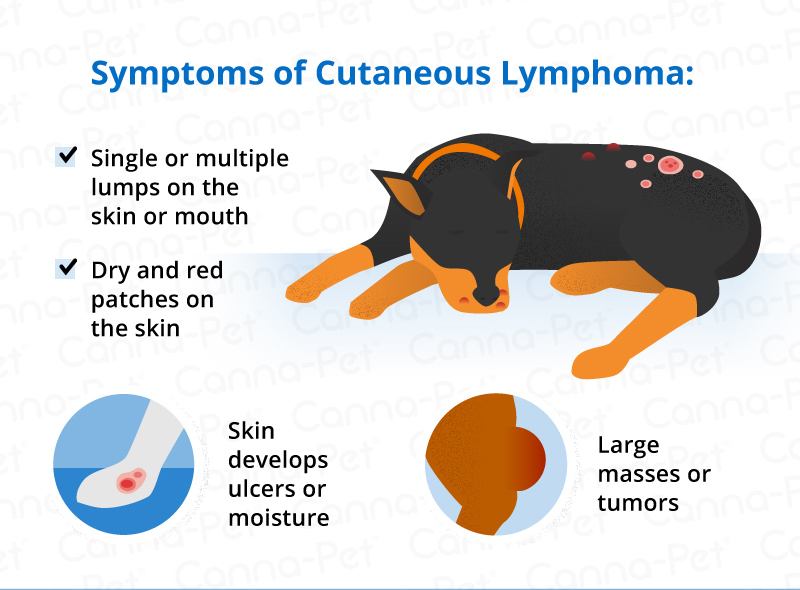
Dogs with mediastinal lymphoma usually have difficulty breathing. The shortness of breath might be due to the presence of a large mass within the chest or an accumulation of fluid within the chest. Mediastinal lymphoma may also cause muffled heart sounds.
Dogs affected by lymphoma may also show swelling of the face or front legs (edema) as well as increased thirst and urination. Lymphoma can also occur in the heart, eyes, central nervous system or bone.

Diagnosis of Lymphoma in Dogs
Canine lymphoma generally does not cause pain unless the bones are involved. It is diagnosed through a combination of diagnostic tests. These include blood tests, fine needle aspirates of the tumor, biopsies, X-rays, and ultrasounds. Which tests are performed depends on the location of the tumor. Generally, a complete blood count, chemistry panel, and urinalysis will also be recommended.
It’s generally agreed that a biopsy is the best way to diagnose lymphoma. A biopsy is a minor surgical procedure that will remove a piece of lymph node from the dog. The most common methods for lymph node biopsy are tru-cut needle biopsy, incisional wedge biopsy, or removal of an entire lymph node (excisional biopsy). Biopsies have a higher success rate for giving an accurate diagnosis with a larger biopsy sample.
During diagnosis, a dog’s lymphoma will also be assigned a stage to determine its treatment plan and long-term outlook. The World Health Organization developed the staging system for dogs with lymphoma and the stages are:
-
-
- Stage I: Single lymph node involved
- Stage II: Multiple lymph nodes in the same region involved
- Stage III: Multiple lymph nodes in multiple regions involved
- Stage IV: Developments of spleen and/or liver cancer (may or may not have lymph node involvement)
- Stage V: Bone marrow or blood involvement and/or other organ besides liver, spleen and lymph nodes involved
-
Dogs are also categorized into substage A if they show no signs of illness or substage B if they are.
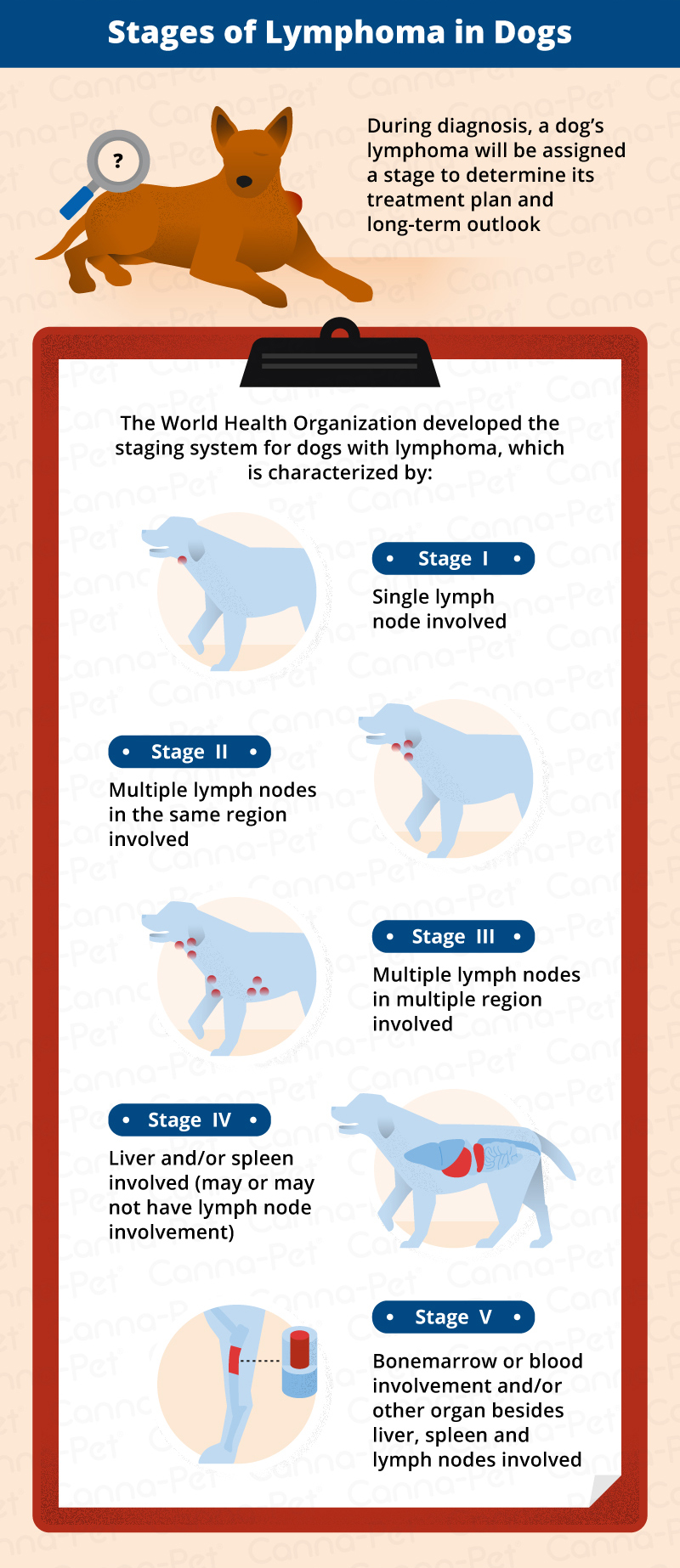
Canine Lymphoma Treatment
There is currently no known cure for canine lymphoma, but it is by far one of the most treatable types of cancer in dogs.
The most common dog lymphoma treatment is chemotherapy. Because lymphoma is a systemic disease, surgery and radiation are usually not effective options for treatment, but in some cases they may also be recommended. Most cases of canine lymphoma will respond well to conventional chemotherapy treatments.
Most dogs are able to tolerate chemotherapy quite well, in fact, much better than humans typically do. Some will get sick from chemo, but serious side effects are uncommon. Fewer than five percent of dogs treated for lymphoma with chemotherapy will experience side effects that require further hospital treatment. These side effects may include loss of appetite, lethargy, and mild vomiting or diarrhea that persists for a day or two. If these side effects get more severe, it’s important to seek further treatment.
Solitary lesions of cutaneous lymphoma may be surgically removed and treated with radiation therapy. Dogs are also given an aqueous solution or an ointment to treat their skin.
Most dogs with lymphoma experience a partial or complete remission of their cancer following treatment, and side effects are usually not severe. In the instances where lymphoma recurs, reinduction is attempted by reintroducing the reinduction protocol that was successful initially. In most of the cases, the response and length of reinduction are half of those seen in the initial therapy.
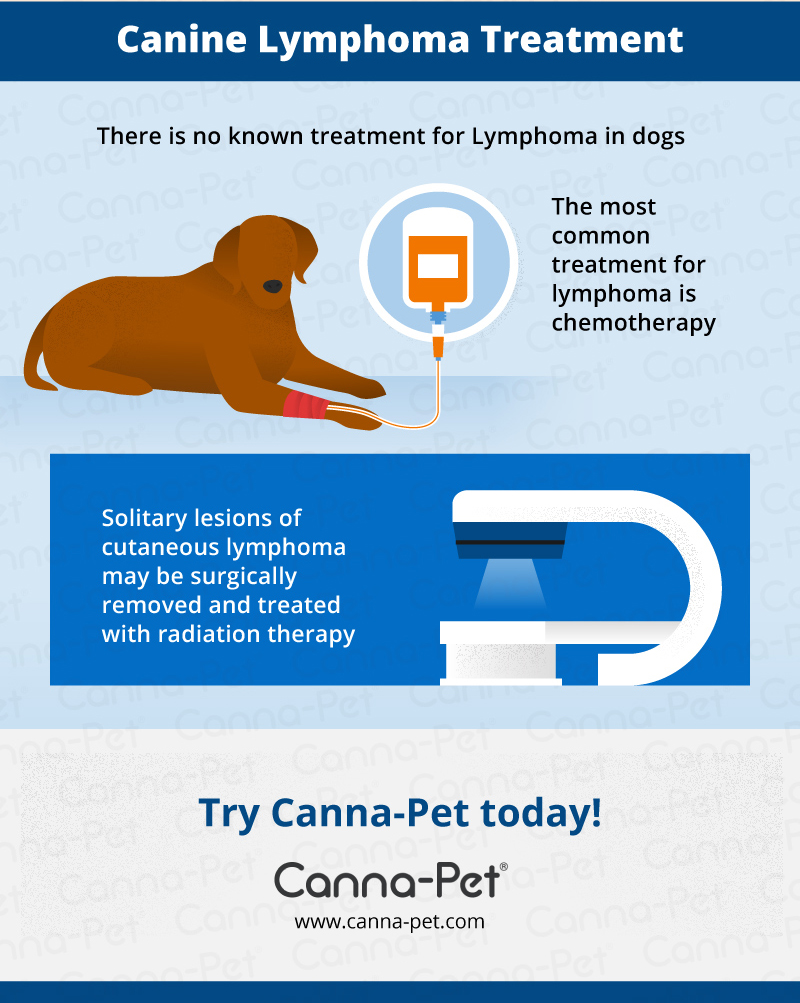
Life expectancy of dogs with lymphoma
The life expectancy of dogs with lymphoma depends on various factors such as how many organs the cancer cells have spread to, what stage the cancer is in and whether or not your dog receives treatment. Dogs with lymphoma that go without treatment can succumb to the disease within four to six weeks. Those that have Stage III to V lymphoma may have even less time. But with proper care and effective treatment, a dog’s lifespan can be extended significantly.
Sources:
-
- “Canine Lymphoma.” Purdue University College of Veterinary Medicine, Accessed 12 Dec. 2016. www.vet.purdue.edu/pcop/canine-lymphoma-research.php.
- “Lymphoma in the Dog.” VCA Hospitals, Accessed 12 Dec. 2016. www.vcahospitals.com/know-your-pet/lymphoma-in-the-dog.
- “5 Tips for Treating and Beating Canine Lymphoma.” PetMD, Accessed 12 Dec. 2016. www.petmd.com/dog/care/5-tips-treating-and-beating-canine-lymphoma.
- “Canine Lymphoma.” IVG Hospitals, Accessed 12 Dec. 2016. www.ivghospitals.com/service/oncology/canine-lymphoma/.
- “Causes & Preventing Lymphoma in Dogs.” Petwave, 15 Aug. 2016, Accessed 12 Dec. 2016. www.petwave.com/Dogs/Health/Canine-Malignant-Lymphoma/Causes.aspx.




